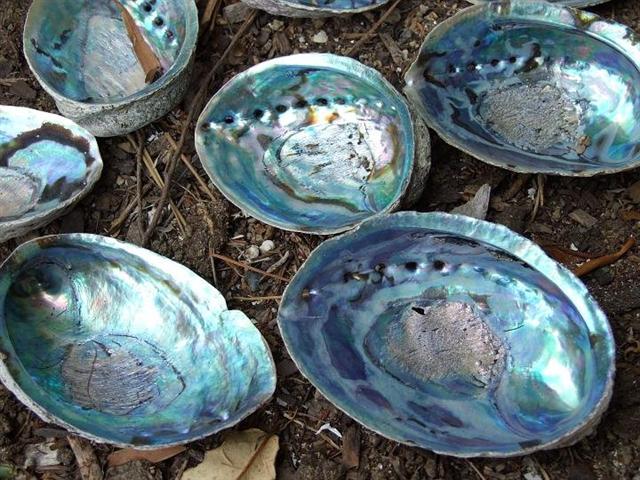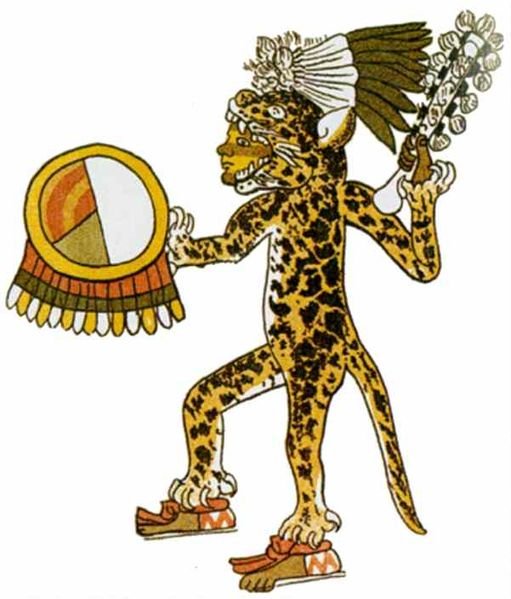458. Once again. When the Chinese
with their wooden clappers announced the arrival of
the solstice we have no doubt they knew what they
were doing. But the dates given need to be
translated:
... In
China, every year about the beginning of April,
certain officials called Sz'hüen used of old
to go about the country armed with wooden clappers.
Their business was to summon the people and command
them to put out every fire. This was the beginning
of the season called Han-shih-tsieh, or
'eating of cold food'. For three days all household
fires remained extinct as a preparation for the
solemn renewal of the fire, which took place on the
fifth or sixth day after the winter solstice [Sic!]
...
The beginning of April cannot be a
date in our own current Sun calendar. Supposing we
instead should adopt
the view of the Mayas, then we could count 70 right
ascension days back in time-space from the solstice
in June 21 (172)
at ξ Orionis (*92.5) to day 102 (21 June) at ξ
Orionis (*22.5). Because when the Sun was at June 21 then
the Full Moon was half a year away at the
winter solstice, at μ Sagittarii (Polis, the
Foal, *275.9).
|
CLOSE TO THE SUN: |
|
15 March (144 - 70) |
16 (300 / 4) |
17 (66 + 10) |
|
0h (445 - 80 = *365) |
MARCH 22 (*1) |
23 (82) |
|
no glyph |
 |
 |
|
Ga1-1 (= 65 - 64) |
Ga1-2 |
|
HYADUM II = δ¹ Tauri
(64.2) |
Net-19 (Crow)
AIN (Eye) =
ε
Tauri,
θ¹ Tauri, θ² Tauri (65.7) |
no star listed (66) |
 |
|
May 24 |
25 (145
= 290 / 2) |
26 (*66) |
|
'April 27 |
28 (118 = 4 * 29½) |
29 (*39) |
|
"April 13 |
14 (104 = 8 * 13) |
15 (*25) |
|
CLOSE TO THE SUN: |
|
11 April (101) |
12 |
13 |
14 (*24) |
15 |
|
APRIL 17 (107) |
18 |
19 |
20 (*30) |
21 |
 |
 |
 |
 |
 |
|
Ga1-27 |
Ga1-28 (Ga1-23 + 5) |
Ga1-29 |
Ga1-30 |
Ga2-1 |
|
6h (91.3)
ν
Orionis (91.4),
θ
Columbae (91.5),
π
Columbae (91.6)
*50 = *91.4 - *41.4 |
ξ Orionis (92.5) |
Al Han'ah-4 (Brand) /
Maru-sha-pu-u-mash-mashu-7
(Front of the Mouth of the
Twins)
TEJAT PRIOR =
η
Gemini
(93.4),
γ
Monocerotis (93.5),
κ
Aurigae (93.6),
κ
Columbae (93.8)
*52 = *93.4 - *41.4 |
FURUD
= ζ Canis Majoris
(94.9) |
Well-22 (Tapir) /
Arkū-sha-pu-u-mash-mashu-8
(Back of the Mouth of the
Twins)
δ
Columbae (95.2),
TEJAT POSTERIOR =
μ
Gemini,
MIRZAM (The Roarer) =
β
Canis Majoris
(95.4),
CANOPUS
(Canopy) =
α
Carinae
(95.6),
ε
Monocerotis (95.7),
ψ1
Aurigae (95.9)
*54 = *95.4 - *41.4 |

... The Pythagoreans make
Phaeton fall into
Eridanus, burning part of
its water, and glowing still
at the time when the
Argonauts passed by. Ovid
stated that since the fall
the Nile hides its sources.
Rigveda 9.73.3 says that the
Great Varuna has hidden the
ocean. The Mahabharata tells
in its own style why the
'heavenly Ganga' had to be
brought down. At the end of
the Golden Age (Krita
Yuga) a class of
Asura who had fought
against the 'gods' hid
themselves in the ocean
where the gods could not
reach them, and planned to
overthrow the government. So
the gods implored Agastya
(Canopus, alpha Carinae =
Eridu) for help. The great
Rishi did as he was bidden,
drank up the water of the
ocean, and thus laid bare
the enemies, who were then
slain by the gods. But now,
there was no ocean anymore!
Implored by the gods to fill
the sea again, the Holy One
replied: 'That water in
sooth hath been digested by
me. Some other expedient,
therefore, must be thought
of by you, if ye desire to
make endeavour to fill the
ocean ... |
|
June 20 |
SOLSTICE |
22 (*93) |
23 (174) |
ST JOHN'S DAY |
|
°June 16 |
17 (168 → 2 * 84) |
18 |
19 |
20 (*91) |
|
'May 24 (144) |
25 |
26 |
27 |
28 (*68) |
|
"May 10 (130) |
11 |
12 |
13 |
14 (*54) |
|
CLOSE TO THE FULL MOON: |
|
11 Oct (284) |
12 |
13 |
14 |
15 (*208) |
|
OCT 17 (290) |
18 |
19 |
20 |
21 (*214) |
|
ZHŌNGSHĀN = ο Herculis
(274.0), π Pavonis (274.6) |
ι Pavonis (275.1),
POLIS (Foal) = μ Sagittarii
(275.9)
MENKAR (α Ceti) |
η Sagittarii (276.9) |
Purva Ashadha-20 (Winnowing
Basket) |
|
KAUS MEDIUS =
δ Sagittarii,
κ Lyrae (277.5),
TUNG HAE (Heavenly Eastern
Sea) = η Serpentis
(277.7),
SHAOU PIH (Minor Minister) =
φ Draconis
(277.8),
KWEI SHE = χ Draconis
(277.9) |
φ
Oct. (278.1),
KAUS AUSTRALIS =
ε
Sagittarii
(278.3),
ξ
Pavonis (278.4),
AL ATHFAR (The Talons of
the Falling Eagle) =
μ
Lyrae
(278.6)
*237 = *278.4 - *41.4
|
|
Dec 20 |
SOLSTICE |
22 |
23 (357) |
CHRISTMAS EVE |
|
°Dec 16 |
17 |
18 |
19 (*273 → Sept 30) |
20 (354 = 12 * 29½) |
|
'Nov 23 (327) |
24 |
25 |
26 (*250) |
27 |
|
"Nov 9 |
10 (314 → π) |
11 |
12 (*236 = 8 * 29½) |
13 |
There were 3 days
with only cold food served early in
April, because the kitchen fires had
been extinguished, and there were
5-6 days after the solstice until
the solemn renewal of fire. The
glyphs suggest these 3 dark days
coincided with 11 - 13 April, for
there is no sign of darkness just
before day 101:

|
6 April (*16) |
7 |
8 |
9 |
10 (100) |
|
APRIL 12 |
13 |
14 (104) |
15 |
16 (*26) |
 |
 |
 |
 |
 |
|
Ga1-22 |
Ga1-23 |
Ga1-24 |
Ga1-25 |
Ga1-26 |
|
CLOSE TO THE FULL MOON: |
|
6 Oct |
7 (280) |
8 |
9 |
10 |
|
OCT 12 (285) |
13 |
14 |
15 |
16 (*209) |
|
MULIPHEN (Oaths) =
γ
Ophiuchi
(269.0),
BASANISMUS = G Scorpii
(269.5),
PHERKARD (Dim One of the
Two Calves) =
δ
Ursae Minoris
(269.9) |
PTOLEMY CLUSTER = M7
Scorpii
(270.5),
GRUMIUM (Lower Jaw) =
ξ
Draconis
(270.9) |
RUKBALGETHI GENUBI
(Bending Claw) =
θ
Herculis
(271.1),
ξ
Herculis (271.5),
ETAMIN (Head) =
γ
Draconis,
ν
Herculis (271.7),
ν
Ophiuchi (271.8) |
Cat's Eye = NGC6543
Draconis
(272.2),
ζ
Serpentis (272.4),
τ
Ophiuchi (272.9)
*231.0 = *272.4 - *41.4 |
Winnowing Basket-7
(Leopard)
18h (273.4)
NASH
(Point) =
γ
Sagittarii
(273.7),
θ
Arae (273.8) |

... As has already been
mentioned, the Delphians
worshipped Dionysus once
a year as the new-born
child, Liknites,
'the Child in the
Harvest Basket', which
was a shovel-shaped
basket of rush and osier
used as a harvest
basket, a cradle, a
manger, and a
winnowing-fan for
tossing the grain up
into the air against the
wind, to separate it
from the chaff. The
worship of the Divine
Child was established in
Minoan Crete, its most
famous early home in
Europe. In 1903, on the
site of the temple of
Dictaean Zeues - the
Zeus who was yearly born
in Rhea's cave at Dicte
near Cnossos, where
Pythagoras spent 'thrice
nine hallowed days' [27]
of his initiation - was
found a Greek hymn which
seems to preserve the
original Minoan formula
in which the
gypsum-powdered,
sword-dancing Curetes,
or tutors, saluted the
Child at his birthday
feast. In it he is
hailed as 'the Cronian
one' who comes yearly to
Dicte mounted on a sow
and escorted by a
spirit-throng, and
begged for peace and
plenty as a reward for
their joyful leaps ... |
|
Dec 15 |
16 (350) |
17 |
18 |
19 (*273 → Sept 30) |
|
°Dec 11 (*265) |
12 (346) |
LUCIA |
14 |
15 |
|
'Nov 18 |
19 |
20 (324) |
21 |
22 (*246) |
|
"Nov 4 |
5 |
6 (310) |
7 |
8 (*232) |
In other words, it
was remembered (or had been deduced) that the
stars in the Winnowing Basket had
moved 70 right ascension days (10
weeks) ahead in the Sun year and
that the Cradle of the newborn Sun stretched for 5 days
after Nash (γ
Sagittarii) had been at the Full
Moon to heliacal Canopus (who
drank up all the waters).
... That the Sun-gods Dionysus,
Apollo and Mithras were all also
reputedly born at the Winter
solstice is well known, and the
Christian Church first fixed the
Nativity feast of Jesus Christ at
the same season, in the year AD 273
(= 3 * 91). St. Chrysostom, a
century later, said that the
intention was that 'while the
heathen were busied with their
profane rites the Christians might
perform their holy ones without
disturbance', but justified the date
as suitable for one who was 'the Sun
of Righteousness' ...
On Hawaii the month
Welo (Vero, spear
point, as in Nash) was 'about
April', but their current King had
to avoid being killed in December:
... A vestige of the practice of
putting the king to death at the end
of a year's reign appears to have
survived in the festival called
Macahity, which used to be
celebrated in Hawaii during the last
month of the year. About a hundred
years ago a Russian voyager
described the custom as follows:
'The taboo Macahity is not
unlike to our festival of Christmas.
It continues a whole month, during
which the people amuse themselves
with dances, plays, and sham-fights
of every kind. The king must open
this festival wherever he is. On
this occasion his majesty dresses
himself in his richest cloak and
helmet, and is paddled in a canoe
along the shore, followed sometimes
by many of his subjects. He embarks
early, and must finish his excursion
at sunrise. The strongest and most
expert of the warriors is chosen to
receive him on his landing. The
warrior watches the canoe along the
beach; and as soon as the king
lands, and has thrown off his cloak,
he darts his spear at him, from a
distance of about thirty paces, and
the king must either catch the spear
in his hand, or suffer from it:
there is no jesting in the business.
Having caught it, he carries it
under his arm, with the sharp end
downwards, into the temple or
heavoo. On his entrance, the
assembled multitude begin their
sham-fights, and immediately the air
is obscured by clouds of spears,
made for the occasion with blunted
ends. Hamamea (the king) has
been frequently advised to abolish
this ridiculous ceremony, in which
he risks his life every year; but to
no effect. His answer always is,
that he is as able to catch a spear
as any one on the island is to throw
it at him. During the Macahity,
all
punishments are remitted throughout
the country; and no person can leave
the place in which he commences
these holidays, let the affair be
ever so important ...

|










